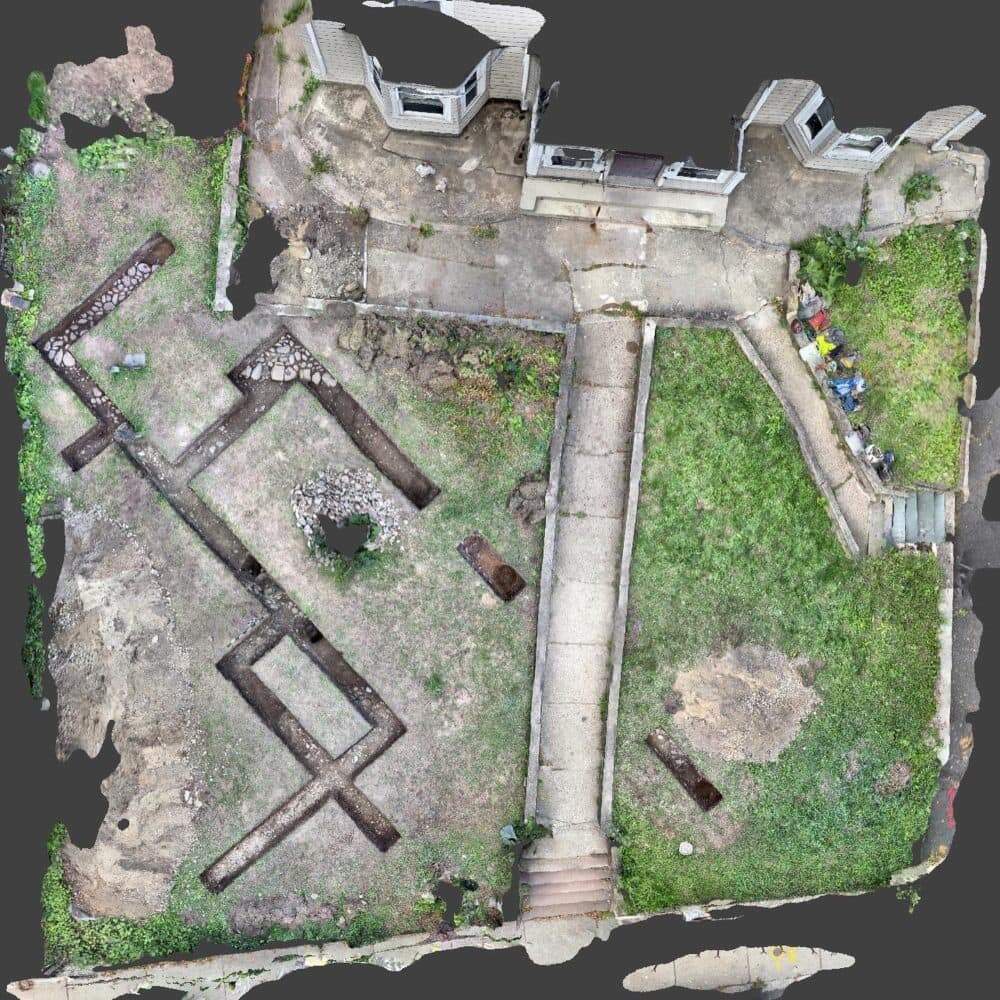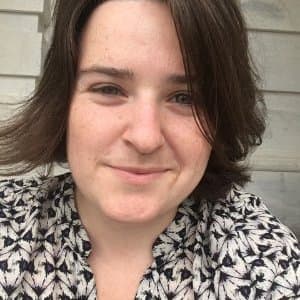Advertisement
Field Guide to Boston
What former slave quarters in Roxbury could teach us about Boston's history

The stories of thousands of people who were enslaved in Boston have largely been erased from the city's history.
The city of Boston is working on telling those stories better. One way is through a database that has information about the lives of people enslaved in the city. And another was through its archaeology program, which uncovered remains of slave quarters in 2022 on the grounds of the Shirley-Eustis House in Roxbury. The city archaeologist believes it one of the only known quarters of enslaved people remaining in New England.
Boston city archaeologist Joe Bagley and Rev. Willie Bodrick II, the senior pastor at Twelfth Baptist Church in Roxbury, joined Radio Boston in September 2022 to talk about the excavation and why it matters to our history. We revisit that conversation as part of WBUR's Field Guide to Boston.
Interview Highlights
On finding the site:
The city found out that the Shirley Eustis House had previously been situated about 60 feet away from where it currently is. That led the archaeologists to believe the basement might still exist — with spaces for a winter or summer kitchen, or quarters that housed enslaved people.
“We were expecting to see a foundation or the basement of this building really clearly, and as we dug down, all we were finding were platforms and surfaces, and a pavement of stone," Bagley said. "It took us about halfway through the dig to realize that the thing we had been finding was in fact the basement level.”
On who might have lived in the quarters:
There were at least five people — four of which were children — enslaved by Gov. William Shirley, who lived at the estate, according to Bagley.
"The first was an infant named Jane, who may have not survived the time when the house was built," he said. "We know there was an infant named Nanny, who was baptized at Kings Chapel in 1753, and died very shortly thereafter — days later. She was actually a servant of Gov. Shirley’s daughter, Catherine, at the age of 18 months. And then later, Gov. Shirley’s daughter Elizabeth and her husband Eliakim had two children enslaved at the home, Affy and Cesar, and a man named Thomas Scipio.”
On what the discovery means:
Rev. Bodrick says he is interested in how this could help the city come to terms with its history and open up other conversations about who we are as a city.
“To me, this is really a conversation that we’re having in Boston writ large around Black erasure, narrative erasure, and how we tell a new story, how we sing a new song," Bodrick siad. "These are people, these are stories that are being both excavated but are also being lifted. If we’re going to think critically about who we are as a city in this particular era, in this particular moment, where we’re seeing the erasure and retelling of slave narratives all across this country, it’s important for us to be a beacon of light to talk about the dark side of Boston, and to actually own the fact that slavery wasn’t just a southern issue. It was a northern issue. It was a city of Boston issue."
On connecting the past and the present
The first step is acknowledging the people and their lives, Bodrick said. It's also important to know there are institutions implicated in the history of slavery.
“The first part of respect is actually telling the story. And what we’re doing now, creating space to actually have the conversation, is of great importance. But it’s also to tie those narratives to what’s happening today.
"We can tell a story of gentrification, we can tell a story of oppression here in the city of Boston. We can tell a story of folks being pushed out, of folks losing their access and opportunity to community and to spaces, or even to live in the city of Boston. These stories are not far ... from the history that we know exists.”
On next steps for the dig site
“This site, we did not dig into it," Bagley said. "We dug down to it. Our main goal was to figure out, is the basement here, where the enslaved spaces and the kitchens were? Now that we’ve been able to say they’re there, the next step is not to dig it up; the next step is to have a conversation with the community to ask the question, 'Should this be exposed more? Should we dig through the floors?'
"There are places in Maryland, for example, where enslaved spaces in basements have had ritual caches, secretly hidden things in the floors around hearths and thresholds. There could be sacred, significant things underground, and I don’t think I have an inherent right as an archaeologist to dig those up. But there could be things in those spaces that could tell a story. So it’s not up to me; it’s up to the community to decide, is this a space that we leave completely intact and don’t go through, or is this a place where we go further into it? But for now, the site is protected. Nothing will happen to it.”
This segment aired on October 23, 2023.

